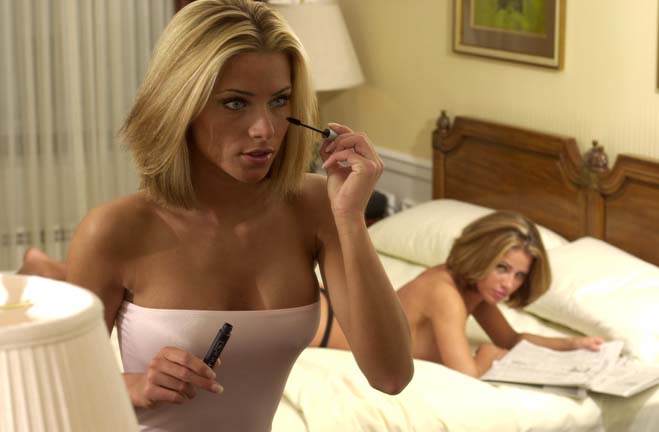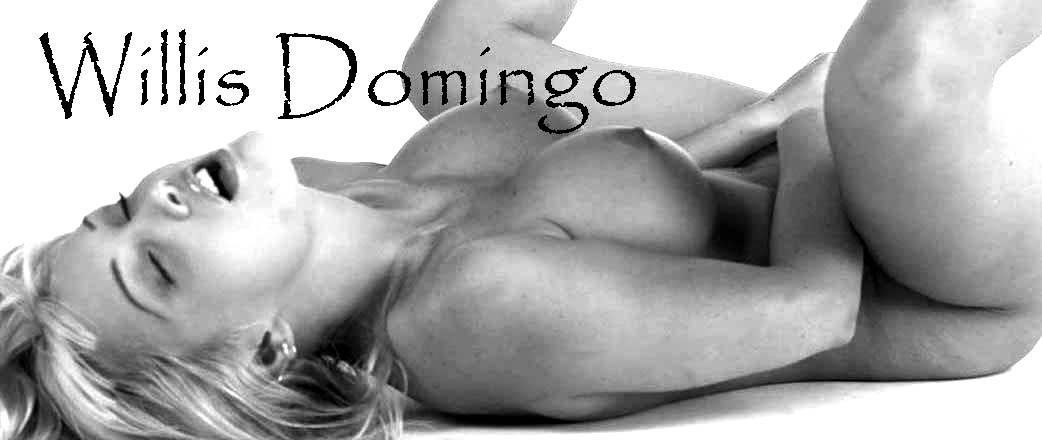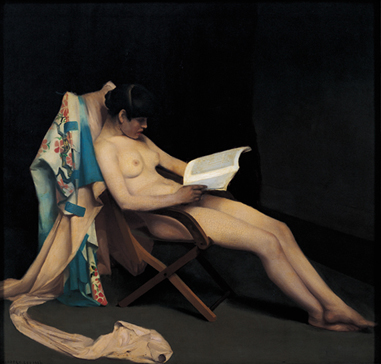|
|
Alison Smith with Robert Upstone,
Michael Hatt, Martin Myrone, Virginia Dodier, Tim Batchelor; Exposed -
The Victorian Nude (Watson-Guptill Publications, 2001)
The primary value
of exhibition catalogs lies in the illustrations of the works, accompanied
by some information about the circumstances of their creation and the
artists’ biographies. This satisfies a particular in need in cases like the
Tate’s exhibition of the Victorian nude since many of the works are in
private collections or small provincial museums, and accordingly have never
before been illustrated. In this light Exposed is a valuable
document.
The actual text, if it is to be worth our
time, should, in addition, be long on fact and short on opinion, especially
in the case of the 19th century nude where – in a situation of
academic faggotry run wild – the verbiage of aesthetic disapproval is often
used to mask religious and moral prejudice.
In this respect, the commentary of Smith and her
confrères is agreeably even-handed and largely ignores the digladiations of
the odious Steinem and her ilk. It is against this temperate background that
I suggest corrections in those cases where I find the influence of the
intolerant has broken through.
Both instances of repugnant observation are the work of
Virginia Dodier from New Mexico and, perhaps incidentally, both cases have
to do with photography. Regarding 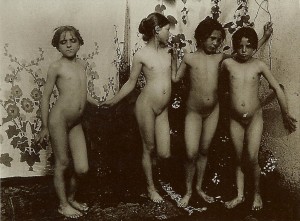 (No. 89),
Plüschow’s lovely portrait of four Italian girls, Dodier says, "This image
of four pre-pubescent, beautiful and undoubtedly poor Italian girls
completely undressed and standing against a wall conveys a palpable sense of
discomfort and vulnerability, degradation and humiliation – key ingredients
in pornography. We do not know who they are or how they were induced to pose
for Plüschow, nor if they posed on more than one occasion or worked for
other photographers. Surely they were paid, whether in money or in food."
Bullshit. There’s nothing like doing a little research if you’re going to be
an art historian. Two of the models may very well have posed for this
Plüschow photo (No. 89),
Plüschow’s lovely portrait of four Italian girls, Dodier says, "This image
of four pre-pubescent, beautiful and undoubtedly poor Italian girls
completely undressed and standing against a wall conveys a palpable sense of
discomfort and vulnerability, degradation and humiliation – key ingredients
in pornography. We do not know who they are or how they were induced to pose
for Plüschow, nor if they posed on more than one occasion or worked for
other photographers. Surely they were paid, whether in money or in food."
Bullshit. There’s nothing like doing a little research if you’re going to be
an art historian. Two of the models may very well have posed for this
Plüschow photo 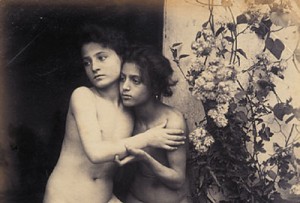 as well
where their obviously posed looks of distress should warn us against drawing
hasty conclusions from facial expressions. And if they are in this
photo as well
where their obviously posed looks of distress should warn us against drawing
hasty conclusions from facial expressions. And if they are in this
photo 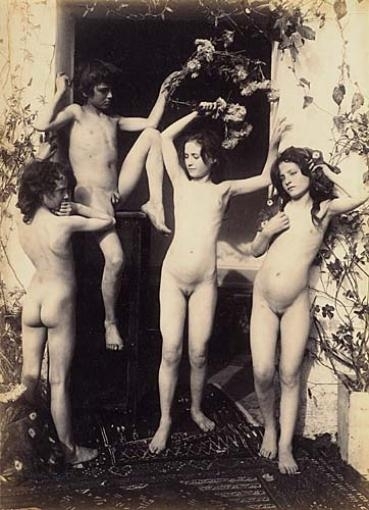 they look
anything but vulnerable, degraded and humiliated. In fact they seem to be
quite enjoying themselves. While we’re at it, why are
"discomfort…vulnerability, degradation and humiliation" "key ingredients in
pornography" I rather enjoy pornography, but the last time I checked I
didn’t much enjoy feelings of discomfort. Perhaps there are those who get an
erotic thrill from images of vulnerability et al. (de gustibus and
all that), but those "key ingredients" would disqualify 99% of sexy and nude
photos (presumably even those of children) since their subjects don’t really
appear to experience vulnerability etc. (unless you stipulate that being
undressed analytically entails vulnerability). Incidentally, by Dodier’s
bizarre definition, they look
anything but vulnerable, degraded and humiliated. In fact they seem to be
quite enjoying themselves. While we’re at it, why are
"discomfort…vulnerability, degradation and humiliation" "key ingredients in
pornography" I rather enjoy pornography, but the last time I checked I
didn’t much enjoy feelings of discomfort. Perhaps there are those who get an
erotic thrill from images of vulnerability et al. (de gustibus and
all that), but those "key ingredients" would disqualify 99% of sexy and nude
photos (presumably even those of children) since their subjects don’t really
appear to experience vulnerability etc. (unless you stipulate that being
undressed analytically entails vulnerability). Incidentally, by Dodier’s
bizarre definition,
 is
pornography but is
pornography but
 is
not. is
not.
In fact the models don’t look vulnerable, degraded and
humiliated in No. 89 either. They have your basic Children Posing for 19th
Century Photos look, not unlike the Fatima urchins:
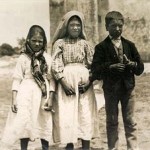 .
If any criticisms could be leveled at No. 89, it is that the figure on the
left should be cropped out. Her eyes are unfortunately closed and the other
three form a kind of Three Graces frieze. But that’s as may be. Still, isn’t
it possible that the girls actually had fun posing for these photos? And
indeed there is nothing wrong with accepting pay for anything you do. On the
contrary. .
If any criticisms could be leveled at No. 89, it is that the figure on the
left should be cropped out. Her eyes are unfortunately closed and the other
three form a kind of Three Graces frieze. But that’s as may be. Still, isn’t
it possible that the girls actually had fun posing for these photos? And
indeed there is nothing wrong with accepting pay for anything you do. On the
contrary.
And then there is the gratuitous and unfounded comment
that the girls were “undoubtedly poor” and working for food. Dodier
reiterates her bluestocking social snobbery regarding 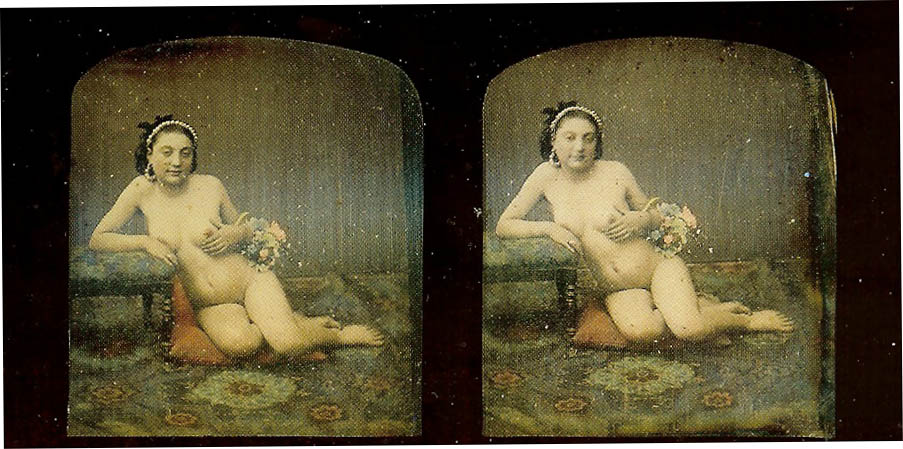 (No. 91),
where she says that the model was "probably working class" and adds "It can
be assumed that the photographer was male, that the purchaser was male and
affluent, that the model was paid for posing, and that the photographer made
a profit." Oh, those horrible men! I thought historians didn’t "assume"
anything, that they looked up the records and, if they couldn’t establish
the facts, they shut up, especially if their assumptions are intentionally
inflammatory. Dodier practices what might be called George Bush art history,
viz. if you don’t have the facts, just make a few up to establish your point
because Jesus would want it that way. And again, what’s wrong with selling
your services and making a profit (although personally I would not pay good
money for a photo of the model in No. 91). Dodier’s social assumptions are
pure regurgitated Karl Marx; I assume she’s just another one of those artsy
America haters. (No. 91),
where she says that the model was "probably working class" and adds "It can
be assumed that the photographer was male, that the purchaser was male and
affluent, that the model was paid for posing, and that the photographer made
a profit." Oh, those horrible men! I thought historians didn’t "assume"
anything, that they looked up the records and, if they couldn’t establish
the facts, they shut up, especially if their assumptions are intentionally
inflammatory. Dodier practices what might be called George Bush art history,
viz. if you don’t have the facts, just make a few up to establish your point
because Jesus would want it that way. And again, what’s wrong with selling
your services and making a profit (although personally I would not pay good
money for a photo of the model in No. 91). Dodier’s social assumptions are
pure regurgitated Karl Marx; I assume she’s just another one of those artsy
America haters.
But why are we supposed to care what social class they
came from? Why make the comment? When I go to galleries or museums I don’t
run around wondering what social class the models sprung from (although I
think some English people do). Is it just because they are nude? I doubt
whether Dodier would waste ink speculating about the the social standing of
the children in Bouguereau’s
Sur la grève, or insinuating what a
horrible exploiter of children the artist was. (Incidentally Plüschow’s
photograph is far superior to Bouguereau’s painting.)
Presumably the idea is that being nude, or at least
posing nude, is irredeemably Working Class, indulged in only by women so
bestialized they would happily lick their own pussies for a crust of stale
bread. But, as other works in the exhibition show, the models we know
something about, largely the English models, were sometimes other artists
like Hetty Pettigrew and quite often women of exceptional self-possession
and lively intelligence. Why not extend this assumption to the Italian
girls? Is it because they are Italian and the Italians are closer to beasts
than the English (or New Mexicans) are? Dodier refrains from this sort of
racist insinuation in her comments on Plüschow and von Gloeden’s photos of
Italian boys. I suppose women in her view are just inferior.
Dodier returns to the fray in her comments of Edward
Linley Sambourne’s nude photos
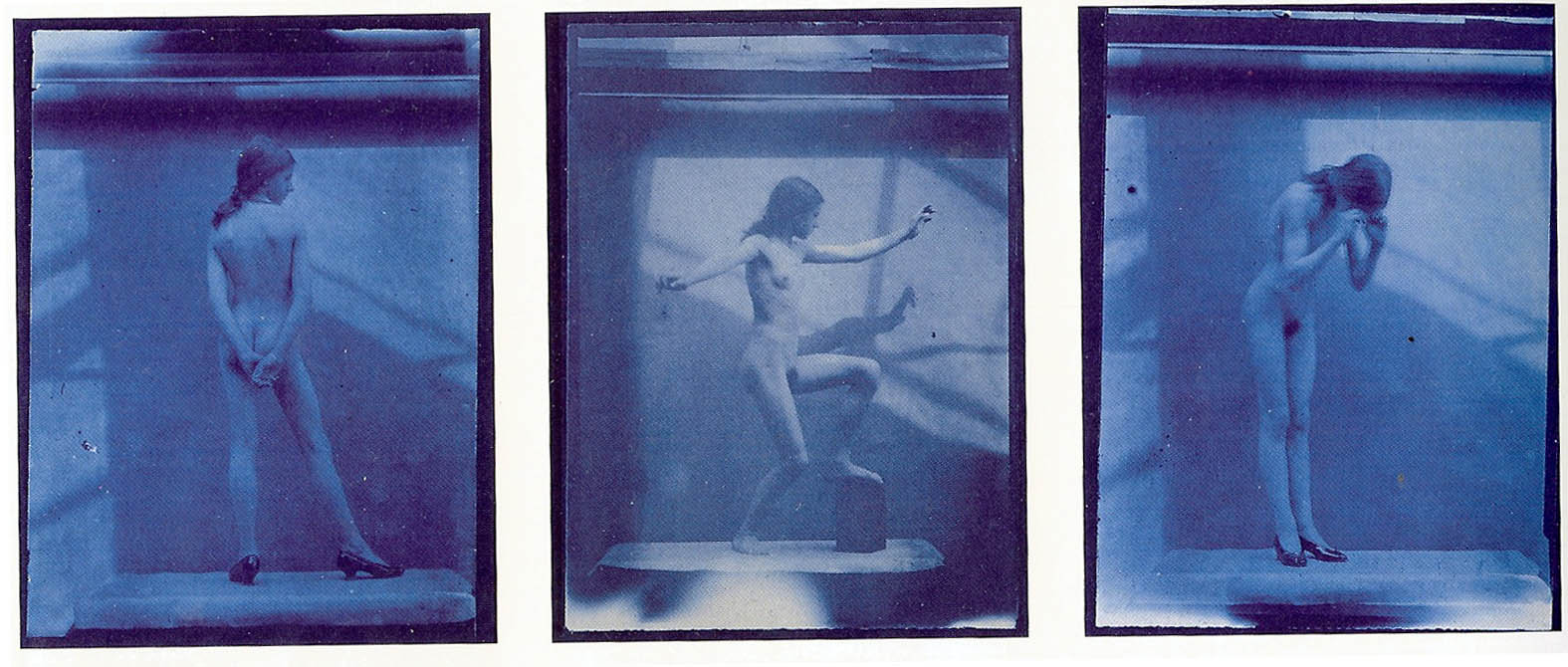 Nos.100-105), but this commentary replaces racism with a similar age-related
prejudice. The works on exhibit include a series with a model named Dorothy
and two fake (because they were obviously shot in a studio) upskirt
photographs Nos.100-105), but this commentary replaces racism with a similar age-related
prejudice. The works on exhibit include a series with a model named Dorothy
and two fake (because they were obviously shot in a studio) upskirt
photographs
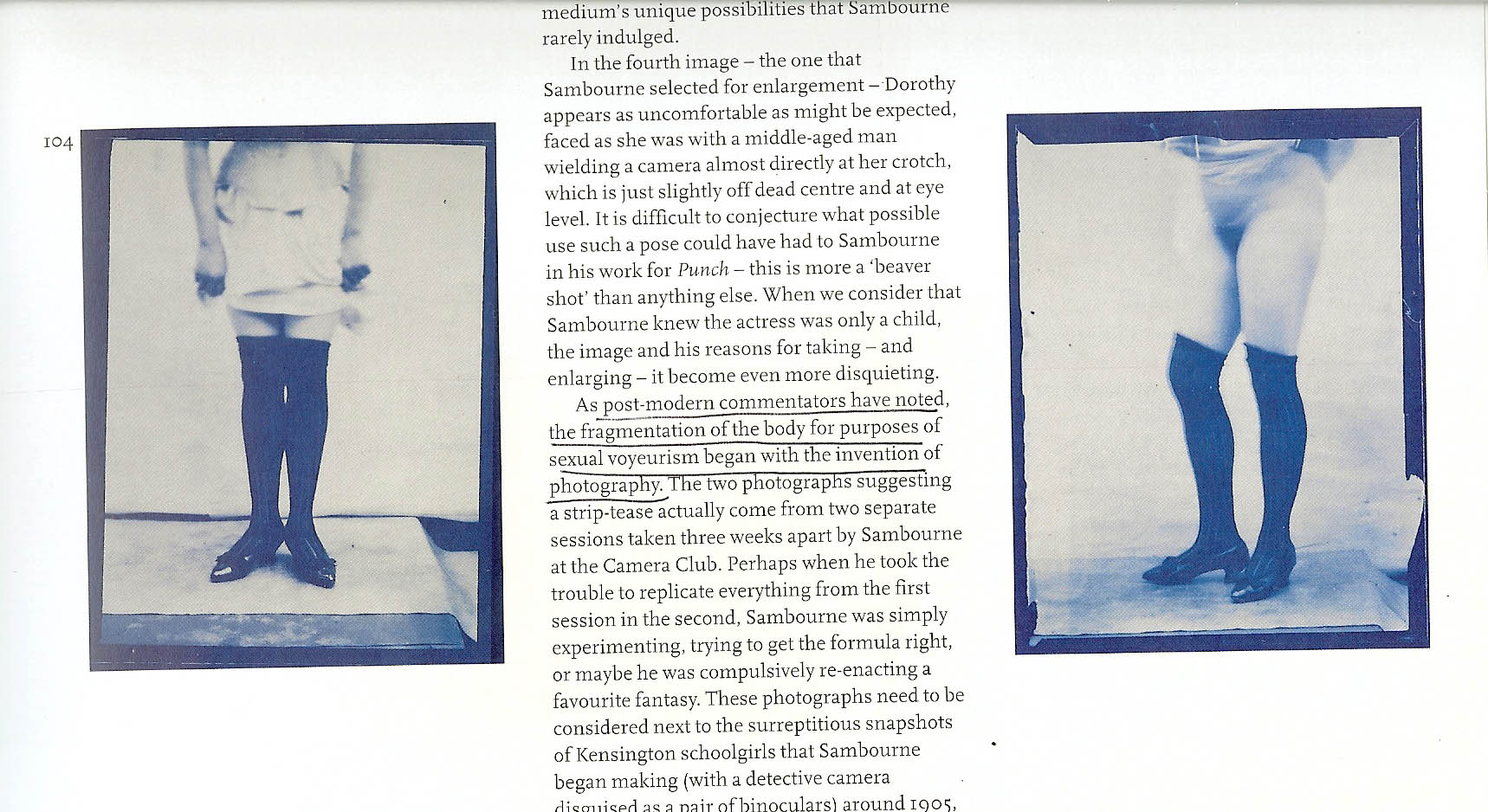 . One of
the Dorothy photographs showed her pussy but seems to have been cropped to
include her face (We cannot tell because prudery or feminazism (The two are
indistinguishable, really) caused it to be excluded from the exhibition).
Dodier writes, "It is difficult to conjecture what possible use such a pose
could have had to Sambourne in his work for Punch – this is more a
‘beaver shot’ than anything else. When we consider that Sambourne knew the
actress was only a child, the image and his reasons for taking – and
enlarging – it become even more disquieting." She adds à propos of
the upskirt photos, "As post-modern commentators have noted, the
fragmentation of the body for the purposes of sexual voyeurism began with
the invention of photography." Once again Dodier lets her own "Victorianism"
get in the way of responsible scholarship. Why are these photos supposed to
have anything to do with Punch? Art is usually created for the
pleasure of the thing and attractive nude women are a pleasurable sight.
Sambourne’s age is irrelevant unless one assumes that the "middle-aged" –
and indeed the elderly – should be denied sexual pleasure. In fact Dorothy’s
youth seems to contribute to her attractiveness, since 19th
century artists were struggling to escape the big butt canons of proportion
that came down from the Renaissance, and one of their means was precisely
the observation of real women, their models, instead of relying on ruler and
compass guides to human proportions. Dorothy’s pictured "aplomb" has two
sources worth noting. On the one hand Sambourne was clearly trying to escape
from the stiffness of much portrait photography due in large part to the
clumsiness of available photographic techniques. Clearly film speed and
contrast control had improved to the extent that Sambourne could take "42"
shots of the models in one sitting (No. 96) and the models could assume
poses (Nos. 98 and 99) that could not have been held for too long with any
degree of spontaneity. It also allowed Dorothy to move in front of the
camera, even though she had to pause for each shot, and thus provide an
initial taste of the potential for photographic models. It is perhaps
unfortunate that Sambourne chose to experiment with high contrast lighting
from the skylight, which might be responsible for the murkiness of the
photos. On the other, the immense speed and flexibility of photography
compared to studio painting and even sketching allowed artists to experiment
freely with poses and compositions because they were no longer held back by
the great investment of time required by manual techniques. The three
exhibited Dorothy poses were the work of an afternoon, and one can only
speculate how many decades - or centuries – would have had to elapse before
painting or sculpture could have evolved away from endless Knidian
imitations to dabble in these offbeat poses. . One of
the Dorothy photographs showed her pussy but seems to have been cropped to
include her face (We cannot tell because prudery or feminazism (The two are
indistinguishable, really) caused it to be excluded from the exhibition).
Dodier writes, "It is difficult to conjecture what possible use such a pose
could have had to Sambourne in his work for Punch – this is more a
‘beaver shot’ than anything else. When we consider that Sambourne knew the
actress was only a child, the image and his reasons for taking – and
enlarging – it become even more disquieting." She adds à propos of
the upskirt photos, "As post-modern commentators have noted, the
fragmentation of the body for the purposes of sexual voyeurism began with
the invention of photography." Once again Dodier lets her own "Victorianism"
get in the way of responsible scholarship. Why are these photos supposed to
have anything to do with Punch? Art is usually created for the
pleasure of the thing and attractive nude women are a pleasurable sight.
Sambourne’s age is irrelevant unless one assumes that the "middle-aged" –
and indeed the elderly – should be denied sexual pleasure. In fact Dorothy’s
youth seems to contribute to her attractiveness, since 19th
century artists were struggling to escape the big butt canons of proportion
that came down from the Renaissance, and one of their means was precisely
the observation of real women, their models, instead of relying on ruler and
compass guides to human proportions. Dorothy’s pictured "aplomb" has two
sources worth noting. On the one hand Sambourne was clearly trying to escape
from the stiffness of much portrait photography due in large part to the
clumsiness of available photographic techniques. Clearly film speed and
contrast control had improved to the extent that Sambourne could take "42"
shots of the models in one sitting (No. 96) and the models could assume
poses (Nos. 98 and 99) that could not have been held for too long with any
degree of spontaneity. It also allowed Dorothy to move in front of the
camera, even though she had to pause for each shot, and thus provide an
initial taste of the potential for photographic models. It is perhaps
unfortunate that Sambourne chose to experiment with high contrast lighting
from the skylight, which might be responsible for the murkiness of the
photos. On the other, the immense speed and flexibility of photography
compared to studio painting and even sketching allowed artists to experiment
freely with poses and compositions because they were no longer held back by
the great investment of time required by manual techniques. The three
exhibited Dorothy poses were the work of an afternoon, and one can only
speculate how many decades - or centuries – would have had to elapse before
painting or sculpture could have evolved away from endless Knidian
imitations to dabble in these offbeat poses.
As regards these post-modernist commentators,
references are lacking so we have no idea whom Dodier is talking about (Nochlin?).
But whoever, they may be, somebody is just flat wrong. If the pompous
academic phrase "fragmentation of the body" is supposed to mean images of
body parts, the source is by and large the Japanese print as mediated by
Degas and the motive is not particularly difficult to state. Artists were
and are looking for what they refer to as a more graphic composition, namely
a flatter pictorial space unlike the artificial stage space of Old Master
painting. Body parts are a semi-abstract result of this quest, reaching
extremes in artists like Georgia O’Keefe. Another source is advertisers’
desire to show particular products. If you want to sell rings, you use a
hand model; if you want to sell lipstick, you shoot lips. Exhibiting these
products via the un-"fragmented" image of a model’s entire body would be
just loony. Also unexplained is the meaning of the sinister sneer behind
phrases like "fragmentation of the body" and "sexual voyeurism." I suppose
she means that people get an additional sexual excitement from seeing a
fingernail, for example, and not the rest of a woman’s body. I suppose that
is true for some people, though I for one usually am more turned on by
photos that include a model’s face. In fact when photographers include
photos of body parts in a layout, it is usually for variety. A combination
of long and tight shots provides pace to a photographic layout. The same
camera distance throughout would simply be boring. Close ups of cunt and tit
are exciting for the same reason we like to get close to cunt and tit during
sex. But they are more exciting if photos showing the whole model including
her face accompany them. Dodier and her "post-modern commentators" also seem
to be making the nasty and unstated (unstated because all you have to do is
say it out loud to expose its absurdity) insinuation that "sexual voyeurs"
enjoy images of body parts because it either makes the model anonymous or
allows the viewer to engage in some sort of sadistic Jack the Ripper
fantasy. When you see a cropped photo of a pussy, you see, you are really
butchering the poor young thing in your imagination. Maybe there are people
like that (Krafft-Ebbing may have a few examples), but I venture to say, not
many. I personally prefer intact bodies and I personally find a pleasant
personality (or the painterly index of a pleasant personality) more
stimulating than pure neutrality (One reason that Picasso’s nudes are
neither arousing nor disturbing is the distortion makes them neutral; they
are not real women). But I’ll take neutrality over a bitch any time.
|
